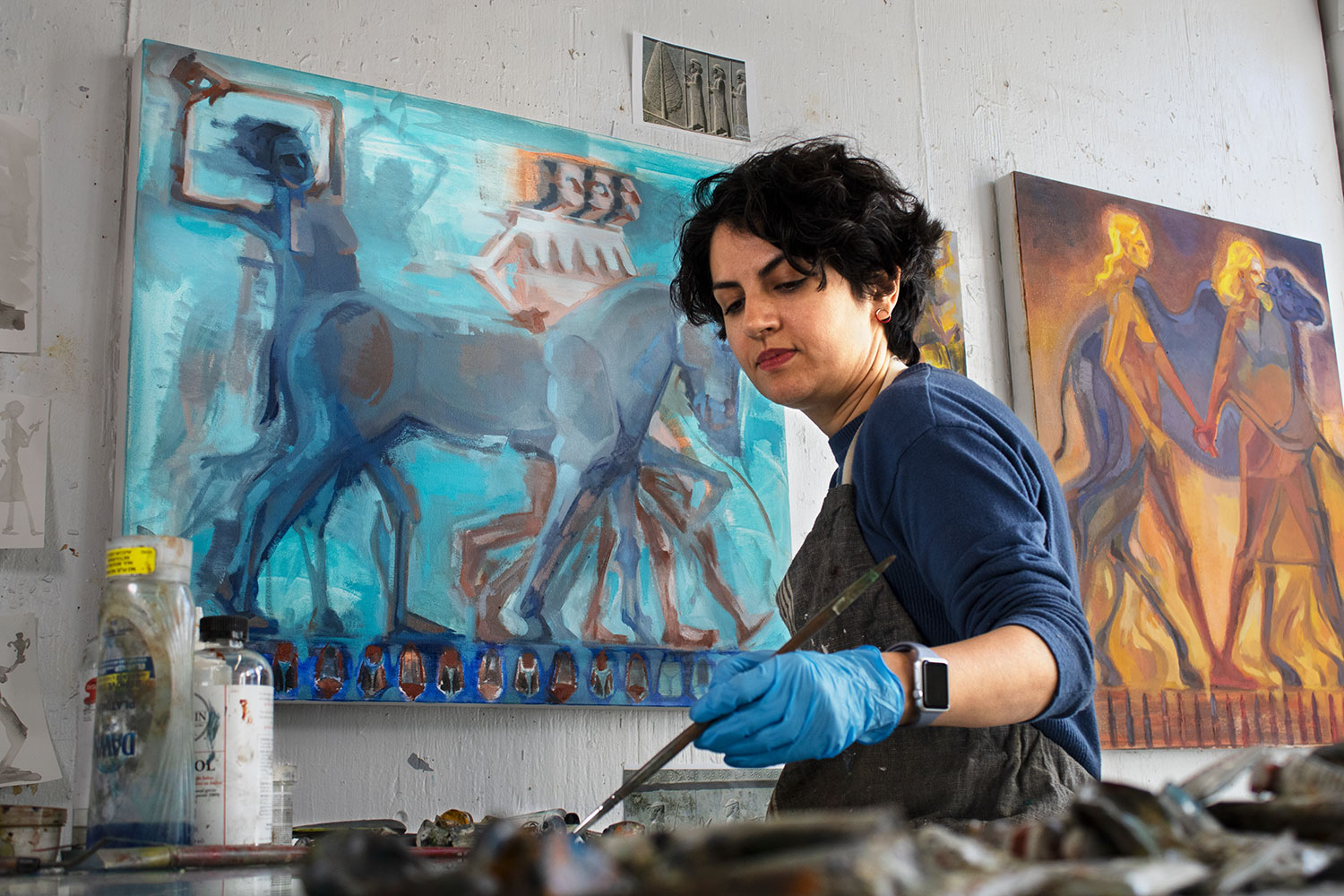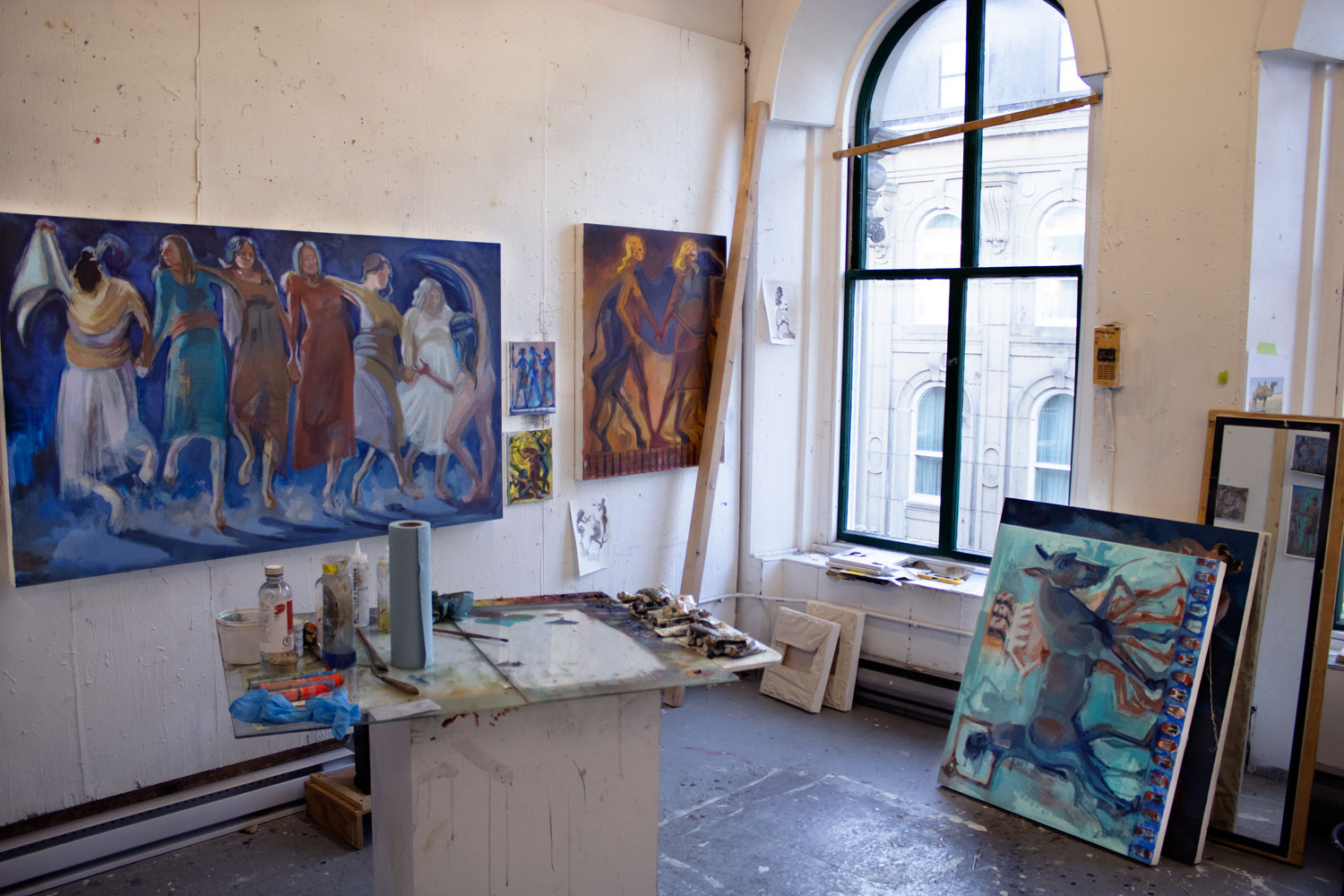
Artist Shoora Majedian has been selected for the 2023 William and Isabel Pope NSCAD Painting Residency. She is an Iranian/Canadian painter based in Vancouver, where she obtained her MFA from Emily Carr University in 2021 and currently serves as a sessional lecturer. Her work explores the embedded ramifications of theocracy while thinking about the ever-evolving relationship between the human body and its surroundings.
Since 2011, the Robert Pope Foundation and NSCAD University have jointly offered a two-month-long residency with a studio and an honorarium to an outstanding Canadian painter each year.
Shoora will have access to a spacious painting studio at NSCAD University’s Fountain Campus, along with an $8,000 honorarium from the Robert Pope Foundation, enabling her to advance her painting research and create a body of work for a two-week solo exhibition at NSCAD’s Anna Leonowens Gallery. She will also deliver a noon talk about her work on November 22.
Can you talk about the importance of the body in your work and your belief in the importance of studying figurative painting?
Figuration embodies the essence of human-to-human, body-to-body connection. In our current era, understanding and embracing this physical relationship is more crucial than ever. The complexities of human emotions and lived experiences underscore the vital importance of this embodied language. As our advancements increasingly revolve around the interaction of the human body with its surroundings, it becomes imperative to explore this connection through visual and artistic means. When conventional language falls short in articulating certain feelings, art steps in to bridge the gap. Figurative art in particular takes this communication to a higher level, appealing to a broader audience. Furthermore, from an aesthetic perspective, the human body is one of the most intricate forms in the visual world. It serves as a fundamental and historical element in storytelling across all cultures. As countless experiences abound in the visual realm, there are equally numerous stories to be told in the figurative domain. Hence, there continues to be many exceptional figurative painters worldwide forever. The sociopolitical factors influencing the human body vary across different regions and for various reasons, making it a subject of enduring curiosity and investigation. I aim to delve into the intricacies of the human body and the limits of personal and public freedom.
You often address the political in reference to your homeland, protest and crowds. Can you talk about how you work with chaos in your practice?
I express my thoughts and emotions through each painting, allowing the creative process to provide answers to my questions. When the answers are elusive, the resulting artwork tends to exhibit a more chaotic appearance, reflecting the complexities of life itself. The experiences of Iranian women in particular are multifaceted, and the paintings that arise from these experiences capture that complexity. Painting involves making choices about composition, brushstrokes, revisions, layers, and multiple stories, and the chaos in the artwork is a result of the memory of all these decisions, which I believe contributes to the uniqueness of the visual image.

Your paintings seem to be very physical and sensual – exploring labour, dancing, cooking, swimming, and singing – how do work with the non-visual senses in your work?
This is a continuous effort, and I’m not entirely sure if I’ve completely achieved it. I firmly believe that a powerful visual image can engage multiple senses, making it memorable. In our everyday lives, we tend to remember moments that stimulate our senses the most. The subject matter and the size of the artwork are the first steps to intensify these feelings, but all the decisions made during the painting process, such as the texture, brushwork, lighting, and colors, can enhance the overall impact. In these subject matters, the common element is the depiction of movement and the interaction between the body and the surroundings, making these experiences universally memorable. I’m particularly fascinated by the interplay between the figures and the space, which creates a dynamic exchange of negative and positive space and opportunities for transformation.
What are you planning to do during your residency, where will your investigations take you?
In this research, my primary objective is to distance myself from personal experiential narratives and instead, delve into the examination of the visual aesthetics of my artistic work. This involves a study of historical images related to ancient Persia before Islam, specifically focusing on the Apadana bas-reliefs of the Achaemenid period, considering the limited resources available. My engagement and questions about these recurring motifs in the form of walking figures depicted in these architectural reliefs was ignited by a discourse concerning the recurrent political crises experienced within the Middle East, marked by a pervasive sense of despair. This encounter impelled me to undertake a detailed exploration of these motifs in my paintings. Through this process, I sought to allow the act of painting to reshape the visual components. This historical imagery, which served as my muse, and my contemplation of contemporary Iranian history have collectively informed the ongoing creation of a body of work that is primarily focused on the portrayal of movement, dance, and singing as emblematic symbols of resilience and fortitude.
Learn more: Visit Shoora Majedian’s website.
